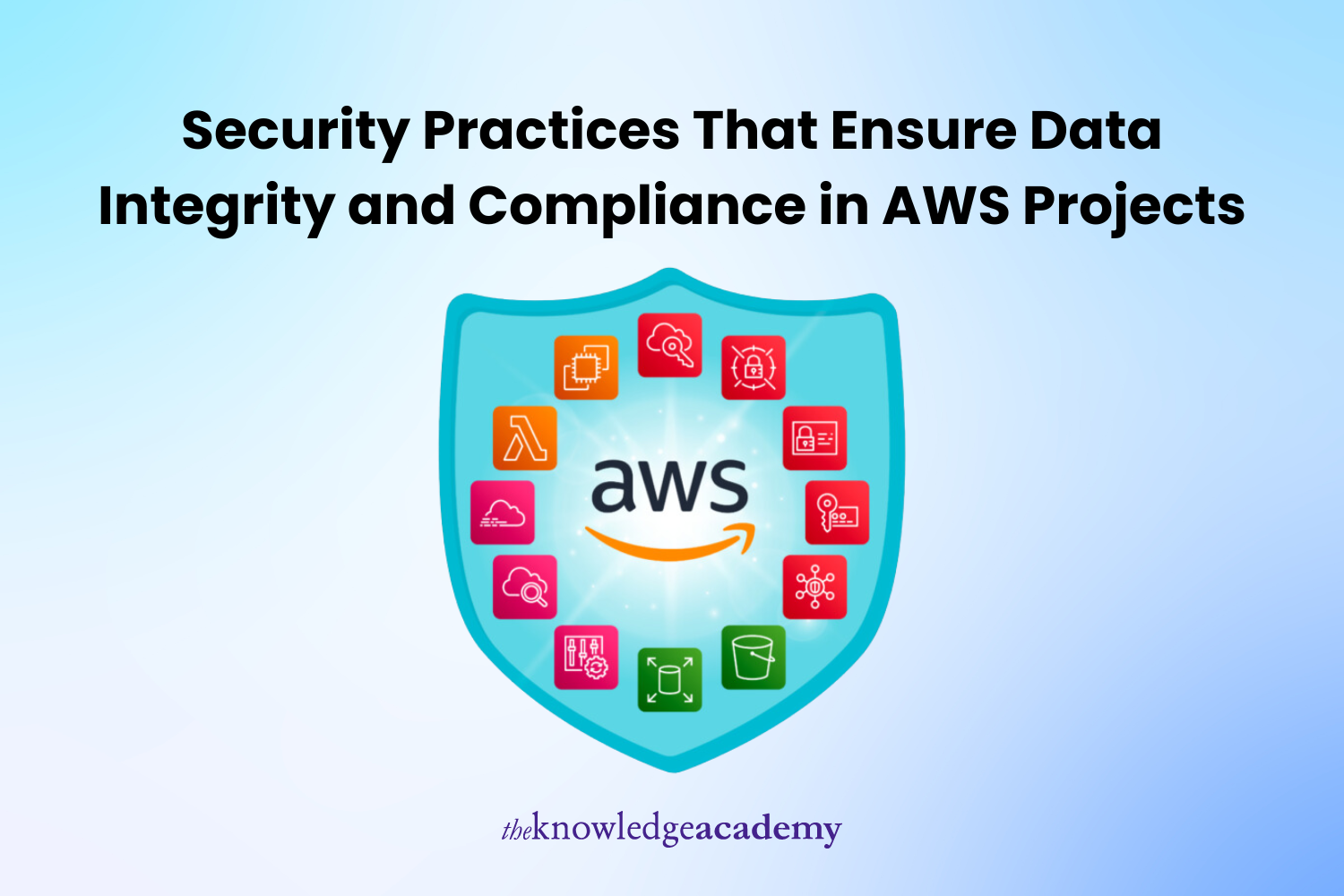Security Practices That Ensure Data Integrity and Compliance in AWS Projects

In today's digital world, it is essential to ensure the safety and accuracy of the data in AWS projects. You must know and implement the best security practices if you are using Amazon Web Service features. These security practices ensure the security and compliance of your data. You can learn about the best practices and tools needed to protect your AWS Projects with AWS Training Courses.
This blog lists the security measures that helps companies to protect their AWS environments, improve data integrity, and ensure compliance.
Nowadays scammers do scam by not paying for links to original owners and then owner remove links
If you want to buy edu guest posts from direct owners
Contact Us: buy@eduguestpost.com
Table of Contents
-
Understand the AWS Shared Responsibility Model
-
Implement Robust Identity and Access Management Policies
-
Utilise Encryption to Protect Data at Rest and in Transit
-
Regularly Monitor and Audit AWS Environments
-
Adopt a Comprehensive Plan for Backup and Disaster Recovery
-
Leverage Advanced Security Services and Tools
-
Stay Informed and Updated
-
Enhance Security with AWS Service-Specific Best Practices
-
Conclusion
Understand the AWS Shared Responsibility Model
AWS's security works on the Shared Responsibility Model. This model outlines the security responsibilities of AWS and its users. According to the model, AWS must protect the infrastructure, hardware, software, networking, and facilities, that runs its services. At the same time, users are responsible for protecting the data they store in AWS services. This includes managing the security configurations, encryption models, and access permissions. Organisations fully understanding and adhering to this model can greatly improve their security.
Implement Robust Identity and Access Management Policies
IAM policies help organisations control which users can access what resources and under what conditions. These policies mandate the organisation to set up multi-factor authentication (MFA) for its users, ensure that users can only access the required resources, and regularly audit users’ access rights. While it's essential to manage IAM, it's a wise move to automate IAM's permissions management process. Automation can reduce human mistakes and further enhance the security of AWS projects.
Utilise Encryption to Protect Data at Rest and in Transit
Encryption methods help protect data and ensure data compliance. AWS provides encryption tools to protect data, both at rest and in transit. AWS's built-in encryption features, like Amazon S3, let users encrypt their data before storing it. Using encryption methods is necessary to meet regulatory requirements and it keeps the data safe against breaches and unauthorised access.
Regularly Monitor and Audit AWS Environments
AWS environments are continuously monitored and audited for the timely detection and prevention of security threats. AWS offers monitoring tools like AWS CloudTrail and AWS Config to track user activity and API usage. These tools detect unusual patterns in the data that could point to a security issue. Amazon CloudWatch is another tool that is used in this regard. CloudWatch sets alarms that immediately alert users about suspicious activities. Along with these monitoring tools, regular audits allow organisations to ensure they follow security rules and policies. These tools and audits protect AWS projects and make them align with the necessary regulations.
Adopt a Comprehensive Plan for Backup and Disaster Recovery
Ensuring data security involves more than preventing unauthorised access. It also involves ensuring data availability and recoverability in case of an incident. A solid data backup and disaster recovery plan is important in this regard. AWS has services like AWS Backup and Amazon Glacier that make it easier to create, manage, and restore backups. Organisations can use these tools to meet their recovery point objectives (RPO) and recovery time objectives (RTO), the essential aspects of compliance in many industries.
Leverage Advanced Security Services and Tools
AWS offers advanced security tools and services to improve the security of your AWS projects. You can use services like Amazon Inspector for automated security checks or AWS Shield for DDoS protection. These services help you find security vulnerabilities and protect yourself from attacks. Another method is to use third-party security solutions in the AWS Marketplace. These solutions are customisable security measures that can be tailored to your needs.
Stay Informed and Updated
Cloud security is constantly updated to be effective against newer threats. Being informed about the latest security trends and updates in AWS practices is very important. AWS training courses and workshops can help individuals and teams stay updated on the newest security tools, techniques, and best practices for AWS environments.
Enhance Security with AWS Service-Specific Best Practices
For complete data protection, following security best practices specific to each AWS service is important. For instance, when using Amazon RDS, it's recommended that you use database encryption, enable SSL/TLS for data in transit, and update the database engines. In Amazon EC2, priority should be given to protecting your virtual private cloud (VPC), properly using security groups, and conducting regular security assessments. Customising your security plans to fit the needs and functions of each AWS service creates a secure environment that constantly protects your data while maintaining compliance with regulations.
Conclusion
The security practices mentioned in this blog can help businesses protect data and ensure data compliance in their AWS projects. As the use of AWS increases, companies should invest in the correct security measures and training to protect their sensitive data and keep the trust of all stakeholders.For more information visit the website: Buy Guest Posts